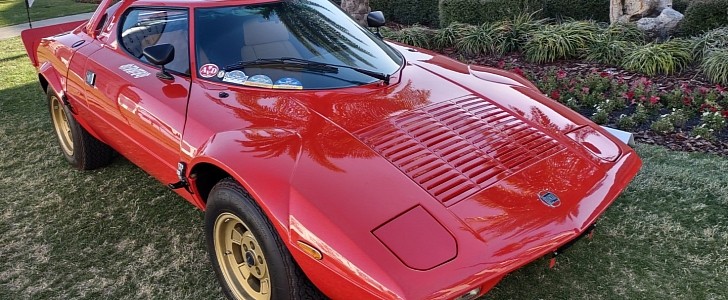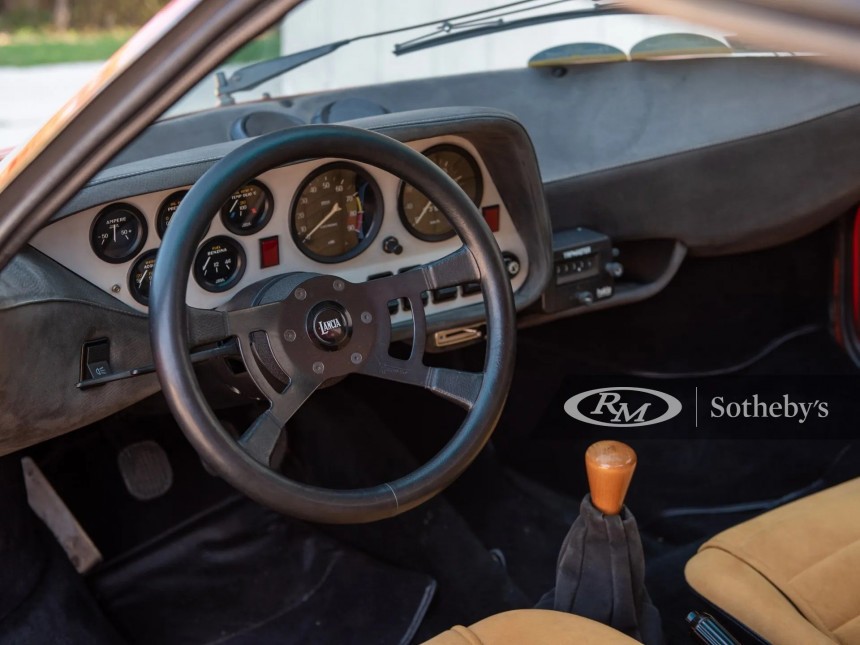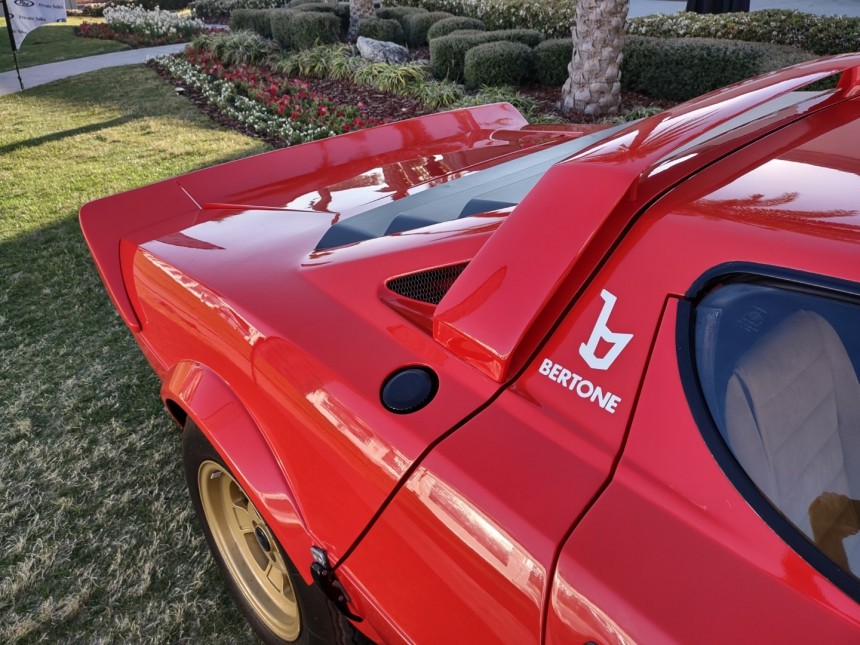During the early days of the WRC, one car reigned supreme for three consecutive years. Powered by Ferrari and sculped by Bertone, this machine was purpose-built to dominate
While our parents were dancing to Disco, a group of determined Italian engineers began a secret project. In late 1970, a group of stylists at Bertone were seeking to upset Lancia’s long-standing relationship with their body suppliers at Pininfarina. You might recognize some of the aggressive lines, as the Stratos was penned by Marcello Gandini, the genius responsible for almost every Lamborghini until the Murcielago arrived in 2001.
Gandini worked with rally drivers to address the shortcomings of the Lancia Fulvia, which had been in production since ‘63. Aiming to build a race car at any cost, the street legal (stradale) version arrived after the car had proven itself on the track. Because race cars often meet sad endings, this example was one of only 492 built between ‘73 and ‘77. It caught me by surprise, as it sounded like a hotter example of a Ferrari Dino.
Enzo’s son Alfredo was a brilliant engineer, and his V6 engines formed the basis for the Fiat empire’s affordable performance cars. As such, the Stratos made use of the Dino’s 2.4-liter six cylinder (borrowed from the 246 GT. Being mid-mounted ahead of a 5-speed transaxle, the driver was crammed between the carburetors and a wrap-around windshield. This was done to maximize visibility while going sideways through the woods at triple-digit speeds.
The first car built to win the WRC did just that, with three consecutive championships from 1974 to ‘76. With a loaded race weight of 950 kg (2,095 lbs), it offered 320 horsepower until their 24-valve cylinder heads were banned for the ‘78 season. This particular example was the last car to leave the Ritz-Carlton hotel after RM Sotheby’s auction at The Amelia 2022.
The new owner was happy to add it to his collection of WRC classics, and he gave us a few bits of history he discovered while chasing it down. Chassis 1640 was completed in July of ‘74, intended for the German market. Potential owners didn’t understand why it was built or what its purpose was, so it sat as a centerpiece for the dealer for a few years.
Not wanting it to go to waste, the owner of Autohaus Burkhardt eventually registered it to himself, and he discovered the powerhouse that had been sitting in his showroom. After adding carpet and undercoating, it has a complete service history with TUV inspections until 2014. It was then purchased by American collectors who consigned it through RM Sotheby’s earlier this year.
The odometer was recorded at each service, and so far the car has only needed a new alternator, seat upholstery, and an upgrade to the fuse block from buss fuses to modern ATC blades. Bertone has attested that the 55,786 kilometers are true, equating to only 34,664 miles since new. The only services done in January of 2021 were to bleed the clutch and replace the belts.
It won’t appear in the auction results because the transaction I wittnessed was part of RM Sotheby’s Private Sales department. For those with immense wealth, this service allows for the trading of valuable assets outside the spotlight of mainstream media. The only condition the buyer asked of us was to maintain his anonymity, so his name and the price he paid won’t be disclosed here. What you need to know is that World Rally Championship cars are poised to become very expensive in the near future, so stay with us to find the next centerpiece of your collection!
Gandini worked with rally drivers to address the shortcomings of the Lancia Fulvia, which had been in production since ‘63. Aiming to build a race car at any cost, the street legal (stradale) version arrived after the car had proven itself on the track. Because race cars often meet sad endings, this example was one of only 492 built between ‘73 and ‘77. It caught me by surprise, as it sounded like a hotter example of a Ferrari Dino.
The first car built to win the WRC did just that, with three consecutive championships from 1974 to ‘76. With a loaded race weight of 950 kg (2,095 lbs), it offered 320 horsepower until their 24-valve cylinder heads were banned for the ‘78 season. This particular example was the last car to leave the Ritz-Carlton hotel after RM Sotheby’s auction at The Amelia 2022.
The new owner was happy to add it to his collection of WRC classics, and he gave us a few bits of history he discovered while chasing it down. Chassis 1640 was completed in July of ‘74, intended for the German market. Potential owners didn’t understand why it was built or what its purpose was, so it sat as a centerpiece for the dealer for a few years.
The odometer was recorded at each service, and so far the car has only needed a new alternator, seat upholstery, and an upgrade to the fuse block from buss fuses to modern ATC blades. Bertone has attested that the 55,786 kilometers are true, equating to only 34,664 miles since new. The only services done in January of 2021 were to bleed the clutch and replace the belts.
It won’t appear in the auction results because the transaction I wittnessed was part of RM Sotheby’s Private Sales department. For those with immense wealth, this service allows for the trading of valuable assets outside the spotlight of mainstream media. The only condition the buyer asked of us was to maintain his anonymity, so his name and the price he paid won’t be disclosed here. What you need to know is that World Rally Championship cars are poised to become very expensive in the near future, so stay with us to find the next centerpiece of your collection!











